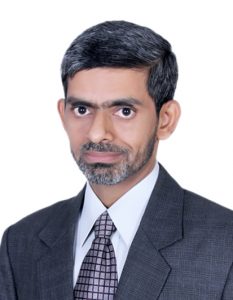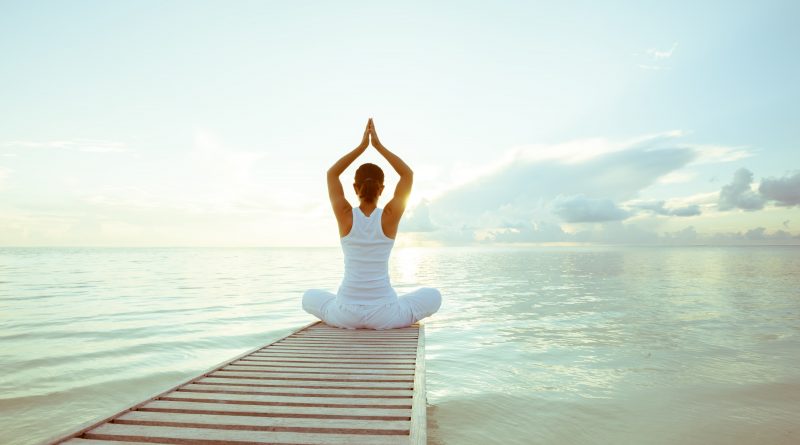Integrating Healthcare
 Traditional systems of healthcare go a long way in achieving the harmony of body, mind, soul, emotions and intellect. If we wish to achieve Health for All, we need to make systems of complementary and alternative medicine a viable part of the contemporary treatment options
Traditional systems of healthcare go a long way in achieving the harmony of body, mind, soul, emotions and intellect. If we wish to achieve Health for All, we need to make systems of complementary and alternative medicine a viable part of the contemporary treatment options
By Dr. Ishwara N. Acharya
Sharira Madhyam Khalu Dharma Sadhanam” (Body is the instrument for all good deeds), wrote illustrious poet Kalidasa. Ancient sages have laid down several principles, concepts & practices, which can keep the body healthy, prevent any illness and take care of the body if it falls ill. These methods are integrated in the very lifestyle of a person – most of the traditional systems are very much part of Indian tradition and culture. Be it fasting once in 15 days or full moon days or on special occasions, taking dip at rivers or sea on auspicious days, taking seasonal fruits or vegetables, taking mud or sand bath, sun bath – all are routine practices in-built in our daily lives. All the more, simple changes are initiated in the lifestyle or dietary pattern when a person falls ill. It is not difficult to implement these traditional systems for the health of the people in our country.
Over a period of time, with the advancement of technology, these systems have evolved as a full-fledged scientific medical system. So much so that these systems are now being used as primary healthcare measures in public health. In fact, a number of research works have been done on these systems, whose acceptance by the conventional medical practitioners and general public has increased enormously.
Mahatma Gandhi was very well aware about the fact that the Indian traditional and cultural practices are sure to provide better healthcare to the people, i.e., he had the firm conviction that only these practices can make Indians self-reliant in health issues. But unfortunately, day by day health status of the people is falling down despite the fact that there is remarkable advancement in the medical technology. The need is to have more health centres rather than nursing homes and hospitals. By health centre, I mean the centres, which educate the people to manage and maintain their health without dependence on medication. To cater to the health needs of the people in our country, prevention is the only solution. If we think on those lines, naturopathy could be the only answer.
Why Traditional System of Medicine?
Traditional systems of medicine, Yoga & Naturopathy are very much part and parcel of daily routine since time immemorial. These systems are sure to play a role in keeping the body, mind, soul, emotion and intellect best aligned to one another. Also, these practices are very useful in managing most of the diseases especially non-communicable and psychosomatic disorders.
Some of the positive points about Yoga & Naturopathy are as under:
1. They are purely drugless in nature, thereby devoid of all the side effects of the so-called systems of medication.
2. Simple, easily adoptable practices. It means we don’t require any sophisticated places, equipment or materials to follow Yoga & Naturopathy.
3. It doesn’t involve much cost in adopting Yoga & Naturopathy. To cite a simple example, in bypass surgery, the cost involved is 10 times more than one-month Yoga & Naturopathy treatment to avoid the bypass surgery. It may not be applicable in 100% cases but can be done in at least 80% of the cases.
4. Yoga & Naturopathy lifestyle and treatments are focused to develop vitality or vital force in an individual. If we translate vitality in simple words its immunity. When immunity of a person is at its optimum level, the strongest pathogen is also inactive.
5. They can very well take care of the risk factors of several diseases, thereby there will be no disease or less disease. Simple modification in the daily routine of a person or food habits based on naturopathy can bring about enormous change in an individual.
6. The cost involved in establishing and running Yoga & Naturopathy Centre/Hospital is also many times cheaper compared to developing a modern medicine hospital or nursing home.
7. Yoga & Naturopathy have their own well developed diagnostic systems, which are scientific, although unexplored. Even in terms of diagnosis and prognosis, the Yoga & Naturopathy methods are non-invasive and cost effective.
In order to positively impact the cost-cutting efforts of healthcare reform, traditional or complementary and alternative medicines must be a viable part of the treatment equation and considered an equal partner in providing quality healthcare for all.
How we can achieve Health for All through Traditional Systems of Healthcare?
Achieving Health for All through traditional systems may not be a herculean task. There is no rocket science involved in it. Also, there is no additional burden on the exchequer, as it requires only diversion of few percent of health budget towards this. The possible, suggested mode of developing the facilities could be as under:
1. All the conventional medicine hospitals, at least, district level hospitals should reserve 25% of its beds strength to patients undergoing traditional system treatments. There should be a full-fledged traditional system treatment facilities with skilled and qualified manpower (both medical and para-medical) to manage the facilities.
2. Minimum five 100-bedded indoor hospitals exclusively for traditional system with all the facilities in each state. We can roughly calculate that for every 5 lakh population, there shall be one such hospital, as we have very small as well as very big states with varying populations.
3. All the modern medicine hospitals, without prejudice, shall refer such patients where traditional system can be the best remedy. There are cases, where medicine is not required or minimally required, such cases can be definitely referred.
4. Simultaneously, we need to produce qualified and skilled manpower in Naturopathy, both medical and para-medical personnel. There should be minimum two government colleges for the study of traditional systems in each state. It may again be based on population of the state.
5. Diet is an important treatment in traditional system. There should be facilities in every nuke and corner of the cities for intake of natural diet. We can see that there are small shops lending beedi, cigarette and tobacco products in every 500 -1000 meter distance, but surprisingly there are no outlets for natural diet. Over and above, the fast food culture has further spoiled the scenario. By encouraging the natural diet outlets, we can achieve many things – employment to the people, indirectly providing health to the public, promoting locally grown natural products and ultimately freedom from fast food culture.
6. Widely publishing the health benefits of traditional system through electronic and print media, social media networks etc., so that people are aware about its utility and the whereabouts of services available.
7. Encouraging private stakeholders to establish traditional system centres /hospitals. This will further add to the range of facilities available to the public. Also, the health insurance companies shall be advised to compulsorily undergo once in a year treatment regimen through Naturopathy by their policyholders. This will not only prevent the major diseases but also expenses on reimbursement by health insurance companies will be largely reduced.
8. All the Govt. /Semi Govt./Corporate/Private Firms should make it compulsory to its employees to undergo traditional system treatment regimen once in a year, without that the medical bills of the employee should not be cleared.
Conclusion
If there is a will, there is a way — this adage is not meant only for circumstantial references but for practical adoption. What we all require in realising the ambitious project of Health for All through traditional healthcare systems is a great and dedicated WILL – the WILL to understand potential of traditional wisdom and translate it into a practical system of healthcare nook the people of our country. Even a little move towards this will bring great changes in the health of the people. Let’s give a serious and genuine thought in this direction and let’s try to realise the dream of Mahatma Gandhi in its true sense.
(The author is Director, Central Council for Research in Yoga & Naturopathy, Janakpuri, New Delhi)
A Growing Global Trend
Spending on traditional medicine is increasing worldwide. Studies have shown that Americans’ use of complementary and alternative medicine (CAM) can help to control costs when used alone or in conjunction with conventional medical interventions. Similar reviews also indicate a high level of effectiveness and positive outcomes when CAM alone is employed. CAM providers are trained to treat the whole patient, not just their illness or injury, and some can even provide primary care as part of their discipline. This combination of effectiveness and lower costs makes CMN important component in the reform of America’s healthcare system.
CAM has several important components that can assist in cost-reduction and quality improvement. These aspects include a broader understanding of a patient’s overall health and lifestyle choices and behaviours on health, and the ability to effect positive changes without the use of higher cost and more invasive procedure.
By the very nature of their training and philosophy of care, CAM providers create productive therapeutic relationships with their patients, treating the whole person, not just their injuries or illnesses. When the totality of the individual’s needs is considered – physical, mental and emotional – positive outcomes are much more likely through Integrative Medicine.
In a recent review of studies on the cost-effectiveness of complementary and alternative medicine, professional economist and NIH-funded researcher Patricia Herman, M.A., N.D., PhD, found proof of savings for treatments as diverse as acupuncture to treat breech deliveries to naturopathic medicine for low back pain. The work, published in the British Medical Journal Open (BMJ Open) suggests that it’s time to accept the real savings made possible through the use of CAM.
Chronic conditions which are healthcare’s biggest cost driver-seem to be especially well suited to the positive impact of complementary and alternative medicine. When it comes to specific figures regarding the cost comparison between CAM users and those who rely solely on conventional medicine, a 2009 study of healthcare expenditures in Washington State found that CAM users’ costs were significantly lower. Not only did CAM users spend less on services from conventional providers, but also on impatient services and other outpatients services like imaging and physical therapy. This was despite the CAM users’ average of $630 in spending for complementary and alternative medicine services.
Not only are prevention and health promotion fundamental cornerstones of CAM, integrative health and medicine practitioners counsel patients more frequently and consistently than conventional providers.

